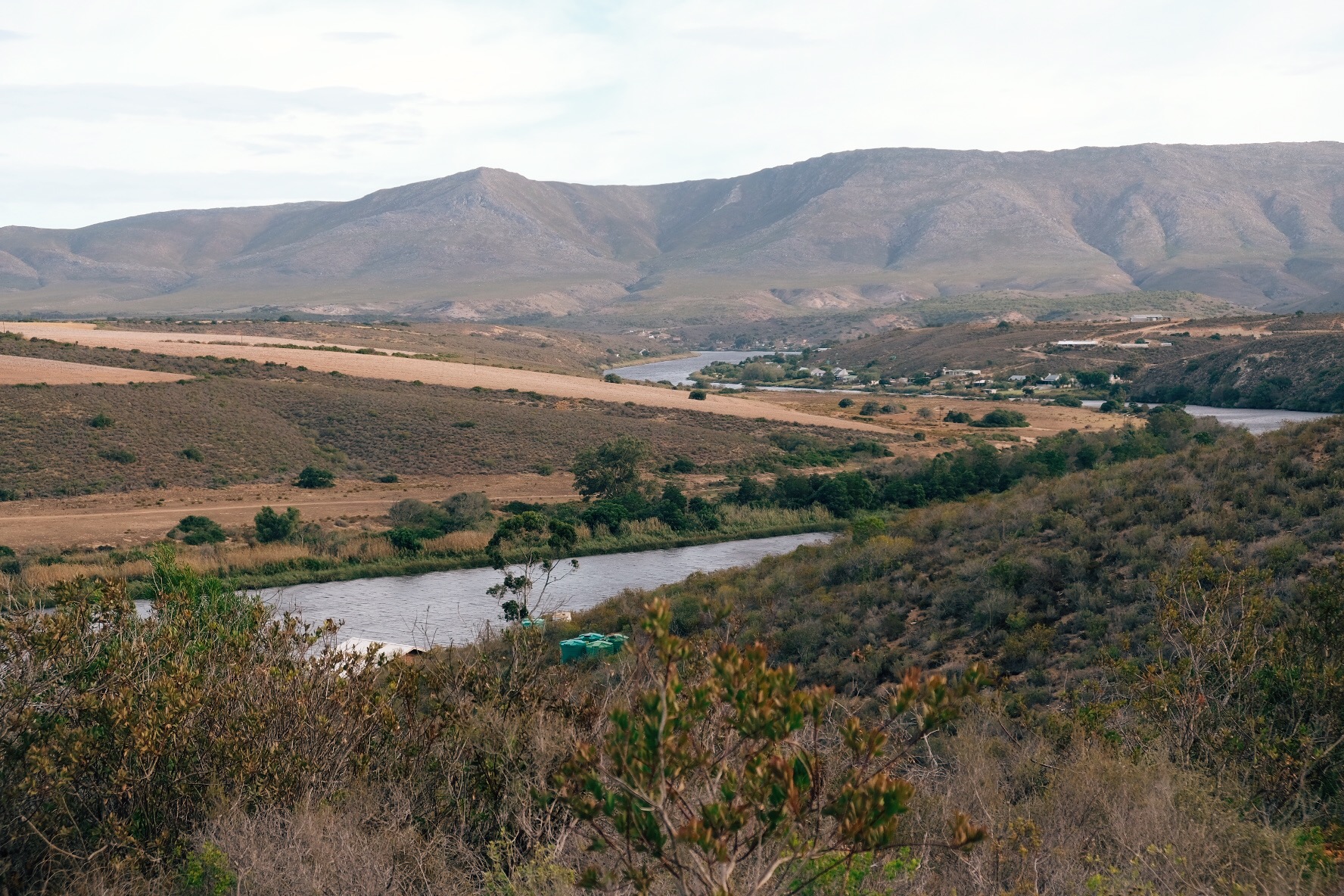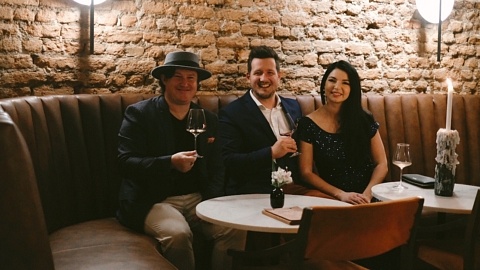“That’s far out, man,” was my flatmate’s response on the Sunday morning when I confessed that it would take us over three hours to drive to Sijnn Winery from our suburb in Stellenbosch.
“Well, I guess so,” I admitted. “But it’s also far out enough to be pretty damn special.”
It was on that note that we opted to venture beyond the familiar borders of the Cape Winelands District Municipality and brave the 230km drive to the far-flung and little-known appellation of Malgas, to visit winemaker Charla Bosman (née Haasbroek).
MAL-GAS
Wikipedia will tell you that “Malgas is a settlement on the right bank of the Breede River in the Overberg region of the Western Cape” and that the name “is probably an adaptation of the Portuguese mangas de velludo, ‘velvet sleeves’, referring to the Cape gannet with its black-tipped wings.” The key word here is probably. While the theory about the bird is quite sweet, what Wikipedia doesn’t tell you is that when you separate out the syllables, ‘mal gas’ can be directly translated from Afrikaans as ‘crazy gas’. I’m not particularly partial to narcotics (Chenin is my poison of choice), but as we turned off the N2 onto the desolate Malgas dirt road, I couldn’t help but wonder if one had to dabble in a bit of ‘mal gas’ to have fun out here.
ACTUALLY QUITE PRETTY
While negotiating the 40km stretch of jagged, tyre-munching stones, it’s hard to imagine anything, let alone grape vines, flourishing in this setting. It’s the kind of place where you feel a bit sorry for the odd sheep or cow you come across, and wonder what on earth they could be eating. That said, once you’ve adjusted to the sparseness of it all, you start to notice that the rocky soil has a subtle gradient from blueish-grey to brick red and that it’s actually quite pretty. In fact, were it not for the cornflower blue skies and occasional parched aloe or stubborn shrub, the road to Malgas could easily pass as a Mars film set.
As we drew closer to Sijnn, it started to make more sense to us why architect and winemaker David Trafford and his wife Rita described themselves as being “blown away with the incredible soils” when they first came across the area in 2000 and “immediately set about finding an appropriate property to purchase.” With little else to distract the eye, the shimmering soil is striking.
DOURO-ESQUE
Upon turning into the Sijnn property itself, the red landscape suddenly gives way to row upon row of leafy bush vines. It’s the kind of sight that makes you rub your eyes a little in disbelief. More so, when you pass over the crest against which the winery building is nestled and first glimpse the winding Breede River with its scrubby riverbanks in the valley below. There’s something a bit Douro-esque about it, and even though Malgas is the furthest thing from established wine country, it’s not difficult to imagine a romantic pastoral history.
CHARLA
Charla, who joined the team in 2014 and has progressed to taking over winemaking at Sijnn, greeted us warmly at the winery and promptly began sharing the Sijnn story. Like the verdant bush vines, she’s a surprising sight in such a sparse location – young, effortlessly beautiful and full of life. “What’s it like for a young person living out in Malgas?” I asked, possibly not the most tactfully. “Uh, interesting!” she responded with a hearty laugh. “To be honest, initially I struggled a bit. Now that I’m married it’s a bit easier. And there are some nice shops in Swellendam. I’m not too deprived!”
Charla’s positivity is paired with striking humility. She takes great pains to give credit to the soil and vines with disclaimers like: “the quality is in the vineyards, which makes my job easy.”
THE EQUATION
Charla, and presumably David, too, would have one think that Sijnn’s winemaking comes down to a simple equation:
very poor soils (90% stone) + very low rainfall (350mm)
= very low vigour and very low yield
= 100% bush vines & very high quality
FAR OUT VISION
But surely it can’t be that easy, or everyone would do it. Yes, the soil is undoubtedly the soul of the operation. I don’t think anyone will argue that it’s the Bokkeveld shale and alluvial deposits of mostly sandstone boulders that provide all of the wines, regardless of vintage or grape variety, with the same distinct mineral character of wet stone, earth and fynbos. It’s the classic French model of terroir-oriented winemaking. But there’s something else there, too. There’s a degree of focus and dare I say far out vision that takes what Sijnn is doing to the next level.
THE GRAPES
Since 2004 with the first plantings of Syrah, Mourvedre, Touriga Nacional, Cabernet Sauvignon and what they then thought to be Tempranillo (later to be notified by the Plant Improvement Board that it was actually Trincadeira), the focus has been on planting for the future, with water scarcity in mind. Since then, Chenin Blanc, Roussanne and Viognier have followed, but according to Charla, ultra drought resistant varieties like Assyrtiko are on the cards for the future.
AU NATURALE
While showing us the simple cellar of predominantly barrels (“I stacked them all myself this year!”), Charla explained Sijnn’s au naturale winemaking philosophy. No added yeast, no added acidity. Only a tiny bit of sulphur. A minimalist approach, to the extent that when the IPW inspector first came round, they refused to believe that Sijnn’s entire ‘chemical store’ fit into the small black crate in the corner of the cellar (mostly containing floor cleaner).
BLENDS
“We believe in blends. Our goal is that one day, everything we produce will go into the two blends. However, if one component is overwhelming in a particular vintage, say, the Touriga Nacional, we use less of it in the final blend. It goes into the Low Profile instead, though you’ll be amazed by how good that is too! You have to go with what the season gives you.”
Sijnn’s commitment to a flagship red and white blend is rare in an industry where single varietal wines are revered. At Sijnn, blending is seen as an art, and it allows immense creativity in the winemaking process.
FEMININE WINE
Charla’s eyes lit up as she explained how with the recent vintage, she experimented with everything from picking dates to partial whole bunch fermentation. Everything is done in small batches, so there’s room to play. “I’m becoming more confident in what I’m doing,” she smiled. “When I got here I just wanted to make wine. Now I want to make the best wine possible!” When we finally sat down on the cellar’s welcoming stoep to taste through Sijnn’s Red and White vintages from the past decade, the evolution was clear. “We’re heading towards a more focused, lean, mineral style, without changing the earthy Malgas character. David actually commented recently that every year the wine I make is becoming more feminine.”
It’s nothing short of astounding how a determined young woman’s trajectory can be so palpable in the character of a wine. Yet it’s not without growing pains. Charla isn’t afraid to admit that she makes mistakes. Laughing, she described how she recently burned some of the vines by accidentally spraying one of the blocks with too much copper sulphate. Learning is part of the process – and pioneering isn’t for sissies.
That evening, as we trundled back along the dirt road to civilisation, I felt a lot less sorry for Charla that her closest Woolies is over an hour’s drive away. To me, Sijnn encapsulates how the most worthwhile things in life are gained through a combination of ingenuity and struggle. And yes, they’re usually a little far out too.
Words and images: Kristen Duff
Originally published on Port2Port on the 29th of March 2018. Read it here.























